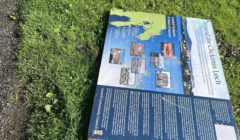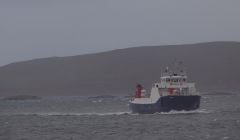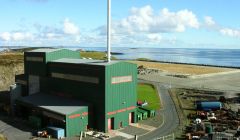Environment / Meeting hears of concerns over decline in wildlife numbers at Clickimin Loch
CONCERNS have been raised again over the apparent reduction in wildlife at the Loch of Clickimin in Lerwick.
The issue was discussed at a meeting of the town’s community council on Monday night.
It followed an email exchange passed onto community councillors between Ray Johnston and Duncan Goudie of the Scottish Environment Protection Agency (SEPA).
Johnston said there has been a gradual decline of wildlife like swans and wildfowl over many years, but “the fall has been dramatic since the high school opened, to the extent that there is now zero birds on the loch”.
He also claimed that fishermen have stopped using the loch due to the lack of fish.
Goudie said in response that no sources of pollution from activities regulated by SEPA were found to be entering the loch.
Previous discussions were held between SEPA, Scottish Natural Heritage and Shetland Amenity Trust, but a reason for the decline in birds was not identified.
Samples showed that there were elevated concentrations of chloride and sulphate in the loch thought to be result of the brackish water, Goudie said, adding that this would indicate seawater intrusion rather than pollution.
The local SEPA officer continued: “Looking at the bird counts from 2000 there has been a gradual decline until 2017 when five tufted duck and three goldeneye were recorded.
“I do not have the figures for the last two years. There does seem to be a marked decline after the school was built however other than the surface water changes the school doesn’t add any additional discharges to the loch.”
The concerns over the loch are nothing new; Shetland Amenity Trust’s natural heritage project officer Paul Harvey previously said the diminished water quality there has led to an increase in toxic algal blooms.
He also said the condition of the loch has “deteriorated markedly in recent years, most notably since the building of the new Anderson High School”.
Become a member of Shetland News
“The water quality has diminished resulting in toxic algal blooms in several recent summers (including 2019), the aquatic macrophyte flora has declined and there appears to be little food available to support wildfowl,” Harvey added in a response to a planning application for housing near to the loch.
At Monday’s Lerwick Community Council meeting members were told that the most recent figures reiterated that numbers of species like goldeneye (ducks) have dropped off significantly.
Caroline Carroll suggested one cause could be birds swooping down and picking up baby ducks walking to the loch. “It’s just nature,” she added.
Lerwick councillor John Fraser offered to contact SEPA to enquire further about the loch issue.
It was also noted that the number of people walking around the loch seems to have increased in recent times, with community council chairman Jim Anderson calling that project a “great success”.
Become a member of Shetland News
Shetland News is asking its readers to consider paying for membership to get additional perks:
- Removal of third-party ads;
- Bookmark posts to read later;
- Exclusive curated weekly newsletter;
- Hide membership messages;
- Comments open for discussion.
If you appreciate what we do and feel strongly about impartial local journalism, then please become a member of Shetland News by either making a single payment, or setting up a monthly, quarterly or yearly subscription.



























